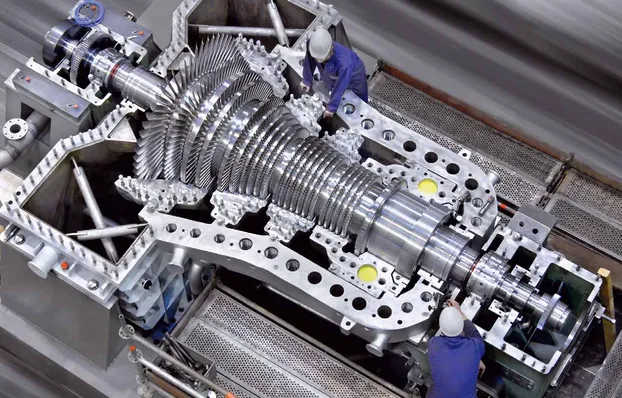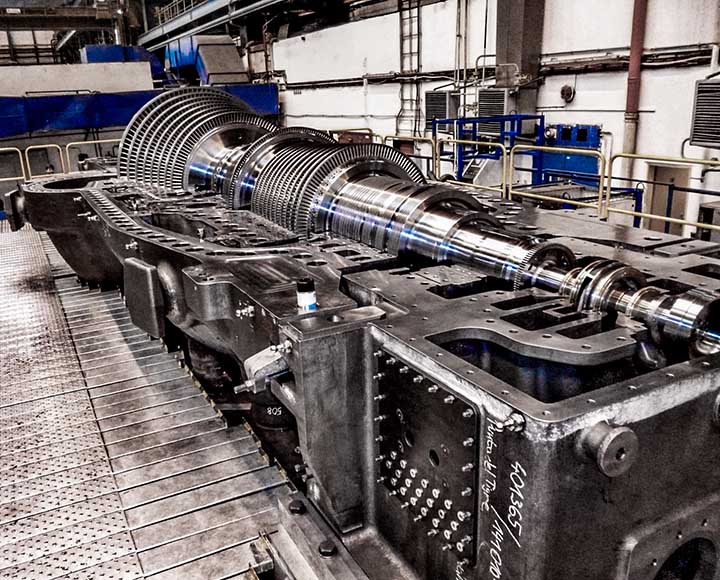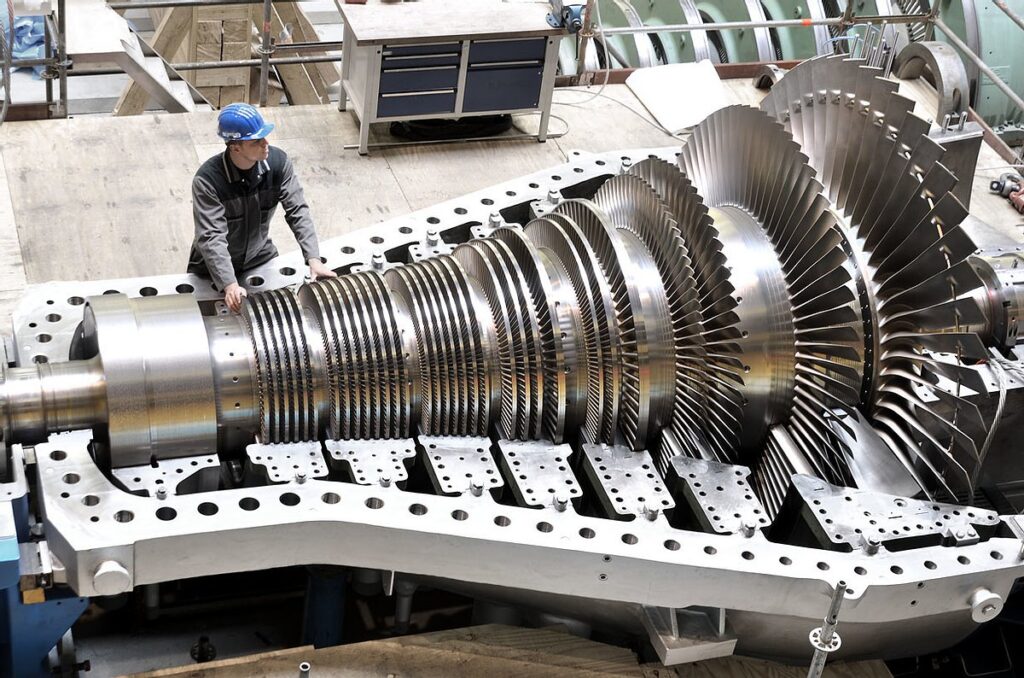FOUNDATIONS - SPECIAL STEAM TURBINES

LIMITATIONS & CRITICAL RISKS IN ENGINEERING & DESIGN - FOUNDATIONS
When it comes to the engineering and design of foundations for industrial special steam turbines in power generation, oil, gas, and petrochemical industries, there are several limitations and critical risks to consider. These factors can impact the reliability and safety of the turbines and may lead to critical failures in existing plants and new projects. Here are some key limitations and risks:
Soil Conditions and Geotechnical Challenges:
- Variations in soil properties, such as low bearing capacity, expansive soils, or poor soil stability, can pose challenges during foundation design and construction.
- Presence of underground utilities, water tables, and other geotechnical features may require additional considerations and precautions.
Dynamic Loads and Vibrations:
- Steam turbines generate significant dynamic loads and vibrations during operation, which can exert high stresses on the foundation.
- Resonance issues, including natural frequencies coinciding with turbine excitation frequencies, can lead to excessive vibrations and potential fatigue failure.
Thermal Effects:
- Steam turbines involve high-temperature operation, which can result in thermal expansion and contraction of the foundation and adjacent structures.
- Differential thermal movements between different components can cause stresses and potential cracking in the foundation.
Structural Design Challenges:
- The design of foundations for special steam turbines needs to account for heavy loads, complex geometries, and specific mounting requirements.
- Proper alignment of the turbine and foundation is crucial to ensure efficient operation and reduce stress concentrations.
Environmental Factors:
- Harsh environmental conditions, such as corrosive atmospheres, high humidity, or coastal areas, can accelerate deterioration of the foundation materials and compromise its integrity.
- Seismic activity in the region may require additional design considerations to ensure the foundation’s resistance to earthquakes.
Maintenance and Accessibility:
- Limited accessibility to certain parts of the foundation due to equipment layout or space constraints can make inspection and maintenance activities challenging.
- Corrosion, erosion, and other forms of degradation should be monitored and addressed regularly to maintain the foundation’s reliability.
Compliance with Codes and Standards:
- Adherence to relevant industry codes, standards, and regulations is critical to ensure the foundation’s design and construction meets the required safety and reliability criteria.
- Compliance with international standards like ASME, API, and local building codes is essential.
To mitigate these limitations and critical risks, the following measures and recommendations should be considered:
- Conduct thorough geotechnical investigations and soil testing to assess the site conditions and develop an appropriate foundation design.
- Perform detailed structural analysis and consider dynamic loads and vibrations during the design phase.
- Incorporate proper insulation and expansion joints to address thermal effects and prevent cracking.
- Use high-quality materials and corrosion-resistant coatings to enhance the durability and longevity of the foundation.
- Employ advanced monitoring techniques, such as vibration sensors and temperature monitoring, to detect potential issues and allow for timely maintenance.
- Regularly inspect and maintain the foundation, including visual inspections, non-destructive testing, and repairs if necessary.
- Collaborate with experienced geotechnical and structural engineers, turbine manufacturers, and construction professionals to ensure a comprehensive and reliable foundation design.
By addressing these limitations and critical risks and implementing appropriate measures, the reliability and safety of industrial special steam turbine foundations can be improved, critical failures can be avoided, and the performance of existing plants and new projects in power generation, oil, gas, and petrochemical industries can be enhanced.
WHY, WHEN, WHERE, WHAT, HOW TO APPLY ENGINEERING & DESIGN - FOUNDATIONS
Applying proper engineering and design principles to the foundations of industrial special steam turbines is crucial for improving reliability and safety, avoiding critical failures, and minimizing shutdowns in power generation, oil, gas, and petrochemical industries. Here’s an overview of the key aspects to consider:
WHY Foundation Engineering and Design is Important:
- Foundations provide a stable and secure base for steam turbines, ensuring their proper operation and minimizing the risk of structural failures.
- Proper foundation design helps mitigate dynamic loads, vibrations, and thermal effects, which can impact the turbine’s performance and longevity.
- Well-designed foundations contribute to the overall reliability, safety, and operational efficiency of the turbines.
WHEN to Apply Engineering and Design for Foundations:
- Foundation engineering and design should be conducted during the early stages of project planning and before construction begins.
- For existing plants, it is essential to evaluate and assess the condition of the current foundations periodically to identify any potential issues or risks.
WHERE Foundation Engineering and Design Applies:
- Foundation engineering and design are applicable to all types of industrial special steam turbines, including those used in power generation, oil refineries, gas processing plants, and petrochemical industries.
- It is essential to consider the specific site conditions, such as soil properties, seismicity, and environmental factors, when designing the foundations.
WHAT to Consider in Foundation Engineering and Design:
- Conduct geotechnical investigations to assess soil conditions, bearing capacity, and potential issues that may affect foundation design.
- Perform structural analysis to determine the loads, stresses, and dynamic response of the foundation under different operating conditions.
- Consider thermal effects, including expansion and contraction, to ensure the foundation can accommodate temperature variations without compromising its integrity.
- Select appropriate materials, reinforcement, and construction techniques to ensure durability and long-term performance.
HOW to Apply Engineering and Design for Foundations:
- Collaborate with experienced geotechnical engineers, structural engineers, and turbine manufacturers to develop a comprehensive foundation design.
- Use advanced software tools for structural analysis and modeling to assess the behavior of the foundation under different loading scenarios.
- Follow industry standards, codes, and guidelines, such as ASME, API, and local building codes, to ensure compliance and safety.
- Regularly inspect and monitor the foundation during operation to identify any signs of distress or deterioration and take necessary corrective actions.
- Periodically review and update the foundation design to account for changes in operating conditions, equipment modifications, or new regulations.
By applying sound engineering and design practices to the foundations of industrial special steam turbines, reliability and safety can be improved, critical failures and shutdowns can be avoided, and the overall performance of existing plants and new projects in power generation, oil, gas, and petrochemical industries can be enhanced.

PROCEDURES, ACTIONS, STUDIES, MITIGATION, RECOMMENDATIONS IN ENGINEERING & DESIGN - FOUNDATIONS
To improve the reliability and safety of the foundations for special steam turbines and to avoid critical failures and shutdowns in existing plants and new projects in power generation, oil, gas, and petrochemical industries, several procedures, actions, studies, mitigations, and recommendations should be considered during the engineering and design process. Here are some key aspects to focus on:
Geotechnical Studies and Site Investigation:
- Conduct comprehensive geotechnical studies and site investigations to understand the soil conditions, including soil type, bearing capacity, groundwater level, and seismicity.
- Perform soil testing and analysis to determine the foundation’s design parameters and assess the potential risks and challenges associated with the site.
Structural Analysis and Design:
- Use advanced structural analysis techniques to assess the loads, stresses, and dynamic response of the foundation.
- Consider factors such as turbine weight, operating conditions, thermal effects, and seismic loads in the design process.
- Ensure that the foundation can withstand the applied loads without excessive deflection, settlement, or vibration.
Foundation Construction and Materials:
- Select appropriate materials for the foundation construction, considering factors such as strength, durability, and resistance to environmental conditions.
- Follow industry standards and best practices for construction techniques, including proper compaction of soil, adequate reinforcement, and appropriate concrete curing methods.
- Implement quality control measures during construction to ensure the foundation is built according to the design specifications.
Vibration Control and Monitoring:
- Conduct vibration studies and analysis to identify potential vibration sources and their effects on the foundation and turbine system.
- Implement measures such as isolation pads, dampers, or dynamic absorbers to minimize excessive vibrations and their impact on the foundation and associated equipment.
- Install vibration monitoring systems to detect any abnormal vibration levels and take necessary actions to address them.
Maintenance and Inspection:
- Develop a regular maintenance and inspection program for the foundation and associated components.
- Conduct routine inspections to identify any signs of distress, settlement, or degradation.
- Implement preventive maintenance practices, such as foundation cleaning, repair of cracks or damages, and monitoring of soil conditions.
Collaboration and Expert Consultation:
- Engage with experienced geotechnical and structural engineers, turbine manufacturers, and foundation specialists to ensure a comprehensive and accurate design.
- Collaborate with construction contractors and suppliers to ensure proper implementation of the foundation design.
Documentation and Documentation:
- Maintain detailed documentation of the foundation design, construction, and maintenance activities.
- Keep records of inspections, repairs, and any modifications made to the foundation over time.
- Document lessons learned from any previous failures or incidents and incorporate them into future designs.
By following these procedures, taking appropriate actions, conducting necessary studies, implementing mitigations, and following recommendations, the engineering and design of foundations for special steam turbines can be optimized to improve reliability and safety, avoid critical failures and shutdowns, and ensure the long-term performance of the turbines in power generation, oil, gas, and petrochemical industries.

